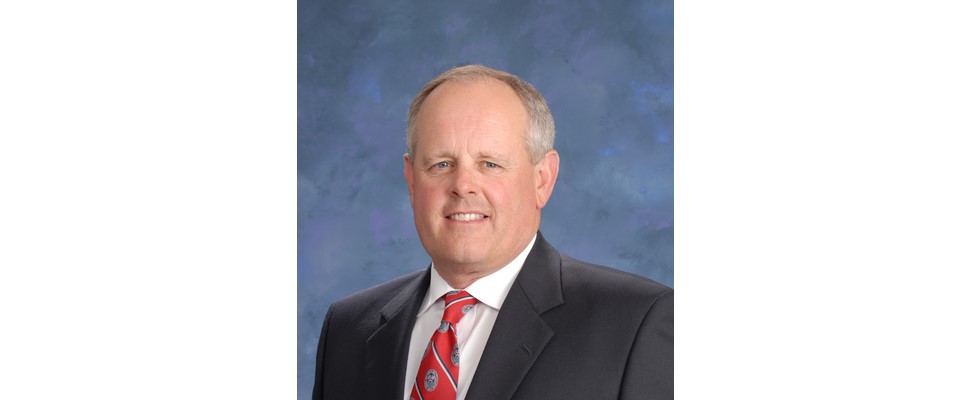Troon, Scotland
7,385 Yards / Par-71
Founded: 1878
Old Course -Willie Fernie, modifications — James Braid
This week marks the 10th time Royal Troon will host golf’s oldest major championship – The Open.
The last time the championship was held there was in 2016 and featured a classic head-to-head tussle down the stretch between winner Henrik Stenson and 2013 champion Phil Mickelson.
The 2024 event will feature a course lengthened from 7,190 to 7,385 yards.
The longest hole in the Open rota – the par-5 6th – will now be even longer at 623 yards. Troon still has the shortest hole with the engaging “Postage Stamp” par-3 8th — which can play anywhere from 123 to an even shorter yardage of 99 yards.
The routing of Troon favors a series of holes that go out in a nearly straight line away from the clubhouse and then for much of the inward half follow a reverse direction back to the clubhouse.
The first six holes provide the best opportunity for players to secure birdie opportunities as the prevailing wind is generally with them in this stretch.
The middle portion – holes 7-12 — ramps up the requirements with testing two-shot holes at the 9th, 10th, 11th and 12th holes. The 11th is a brutal 490-yard par-4 for the pros and was rated the most difficult hole of the 1997 Open Championship. Out-of-bounds and a railway line runs along the right-hand side. For those who err – big numbers can quickly get placed on one’s scorecard.
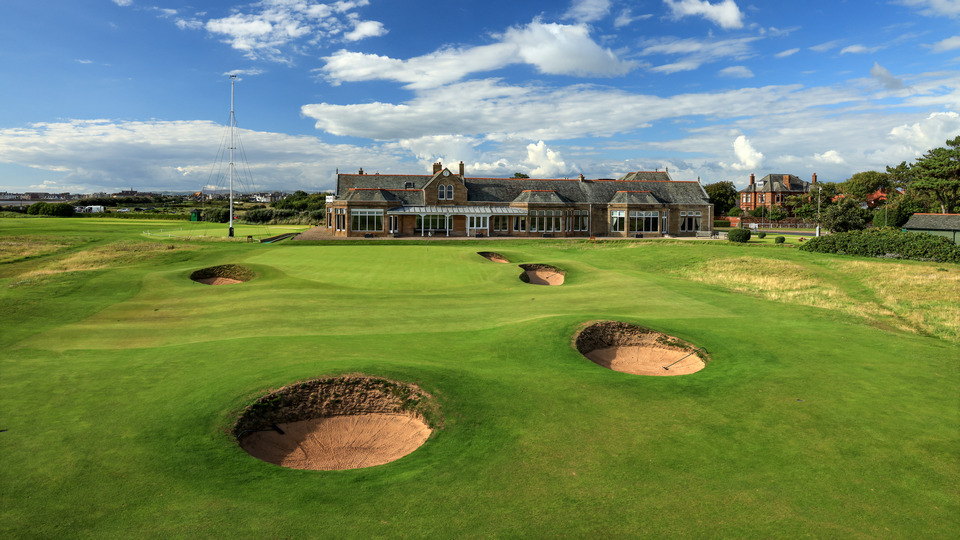
The final third of Troon features an array of challenging holes for the player to overcome with demanding two-shot challenges at the 13th, 15th and 18th holes. The penultimate hole is a treacherous long par-3 that will now play in excess of 240 yards.
Tom Mackenzie and Martin Ebert made minor adjustments to every hole for the 145th Open in 2016, along with more major changes to the 9th, 10th and 15th holes. A backdrop of trees behind the 9th green was replaced with dunes, the former bunker in the carry of the 10th was restored, and both tees and the early portion of the 15th fairway were moved to the left of the 14th hole, reinstating the old line of the hole.
There are only three new bunkers for the 152nd Open Championship, two on the 6th hole with the other added to the 1st fairway. Stenson’s win in 2016 was remarkable for both his four-round record of 264 and finishing with a then record tying final round score of 63 in capturing the Claret Jug.
Four architects provide their respective assessments on the architectural elements Troon provides and what to expect from this year’s final major event.
***
When you hear the words “Royal Troon” what comes to mind?
Tom Mackenzie: The Postage Stamp.
John Fought: Tom Weiskopf winning his lone major and the fabulous duel between Henrik Stenson and Phil Mickelson. The drama of both of these events was great. It’s also a golf course that generally goes out and back.
So, the wind can often make the nines very different. Great natural links course.
Stuart Rennie: Royal Troon is a special place where I have a personal affiliation being a member. I get a sense of pride every time I walk into the clubhouse or down the first fairway.
The club is steeped in history with memorabilia on show and many pictures of past champions holding the claret jug above their heads.
The test of golf is generally fair but can also bite when concentration is lost. Some say Royal Troon has one of the toughest finishing stretches in golf.
Forrest Richardson: Pure links golf. Old school.
The par-3 8th is revered as one of the great short holes in golf. Why aren’t more holes of this length created in modern golf architecture?
Stuart Rennie: The 8th plays between 114 yards and 123 yards and was formally known as the ‘Ailsa’, it’s had various nicknames such as ‘The Pocket handkerchief’ before being renamed the ‘Postage Stamp’.
Personally, I like a short hole on a course and specifically the ‘Postage Stamp’ where I’ve been lucky to have had a hole in one.
I have played a number of new courses where short holes have been incorporated such as Lost Farm and Streamsong and I have too designed a relatively short 142-yard hole at the Kings Course in Inverness, so perhaps short holes are being built?
We are currently consulting at the Troon Links municipals, where we were excited to find a hole named the ‘Postage Stamp’ on an old Braid/Willie Fernie routing which we take inspiration from in our new design proposals to create a short par-3.
Forrest Richardson: The pursuit of length has caused a problem when it comes to short holes. Many people get caught up in the total yardage. It seems every 20-30 yards becomes a priority. That’s sad for the short par-3.
As John Low so eloquently wrote: “The short hole should not be long – ” What more is there to know? The short hole is the greatest equalizer in golf design.
A seven-year-old with a five iron can play nearly equal to an elite player with a half wedge. They both stand in the same place – hit toward the same hole with the rewards and penalties having nothing to do with length.
Tom Mackenzie: For them to work, the green and surrounds have to be extreme. Established extreme holes are accepted and revered, but modern ones are judged differently – harshly in fact. Think back 12 months to Hoylake.
John Fought: Sadly, everyone is too concerned about length today because the ball goes so much farther. I love, and often include a very short demanding par-3 on my courses.
I think short par-3s are wonderful and a great addition to a golf course. In the right setting short holes force a player to think about shot selection. It not about bashing a long club.

Royal Troon is an old-style links with several holes heading away from the clubhouse and then a series of holes reversing direction to the conclusion. Is such a routing compelling enough given the lack of variety from a movement perspective?
Forrest Richardson: It’s the ultimate journey. You trek out. You spend some time enjoying that distant area. Then you make your way back home.
Stuart Rennie: As many are aware old historical Scottish golf courses generally played away from the township and then back again i.e. St Andrews, Dornoch, Troon, Prestwick and even Muir-of-Ord in the village where I grew up.
Royal Troon plays away for six followed by an interesting six providing different direction of play, and then back again for six.
There is more variety than the question suggests, the dune scape and contouring on many of the links varies significantly from hole-to-hole which is part of the beauty and challenge of links golf along with the unpredictable seaside weather.
John Fought: Where the wind is present this is a great way to make the holes play very differently. It is not the right routing for all courses but it does have merit. In my opinion, given the land dictates the golf routing, the architect of Troon utilized the property that he was given very efficiently.
Trying to force a routing onto land is the worst thing a designer can do, it should flow naturally and utilize the natural features to build the overall design.
Tom Mackenzie: The great links come in all shapes and sizes. They all have their strengths and weaknesses and Royal Troon, like a few of the other great links, had this sequence of holes at the start and the finish to play out from and back into the Town when most people walked to the Club. The holes are still varied and interesting.
The greatest aspect of links golf from an architectural dimension is what?
Stuart Rennie: Personally, I like the natural, firm, fast and undulating contour aspects of links golf mixed with the unknown weather conditions. Some days you can play well and be rewarded and others have to suffer the consequences.
Tom Mackenzie: The joy for me is when you see a group of players, playing from much the same place, choosing to play completely different types of shots – some taking the aerial route and others running the ball up more. It is about a wide variety of shot-making options bringing skill to the fore.
John Fought: The land being composed of sand and often rolling bumpy terrain makes links golf the best. I love the fact that the ball moves when it hits the ground.
Being able to play different types of shots – low or curved — is the ultimate in golf. Links golf tests a player’s ability to invent shots on the fly. Just hitting a shot and having it stop is not as interesting as having it bounce and bank on natural features, makes this type of golf very cerebral.
Forrest Richardson: Wind and drainage the way it should be – sand-based. I’d also say that links courses change more than any other flavor of golf.
Why?
Because of the wind, erosion and the power of those two forces. When you build a course among sandy dunes, you can never predict the long-term outcome. Even as this year’s Open unfolds, there will be subtle changes taking place in the dead of night when the wind howls and a few inches of sand moves from one place to another.
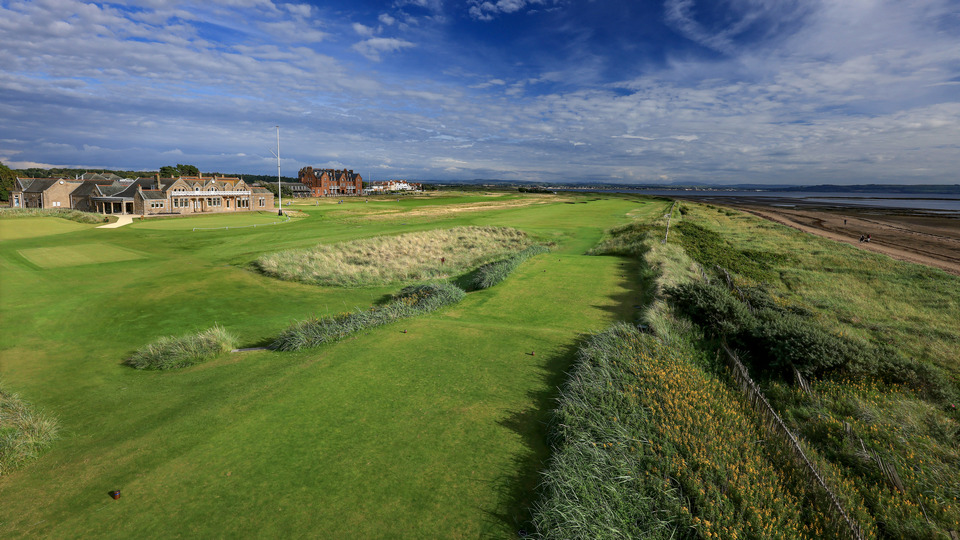
Is firmness and wind the only two characteristics that can hold in check the skill levels of elite players today?
Forrest Richardson: I’d add roughs, deep natives and revetted bunkers. Compare two fairway bunkers. One is gentle and allows anything, up to a 5- or 6-iron. The other, a deep revetted pit that has only one choice – a sand wedge.
What’s more, that nasty pit may create an impossible lie and two or more strokes lost. It may be time to begin looking at bunkers in this way, provided we allow enough options for players to avoid them.
Tom Mackenzie: They are certainly instrumental in reducing low scoring. More importantly, though, I think it makes it a better spectacle because it magnifies the importance of skill over power. Technology has de-skilled the game a firm links when windy is the ultimate test of skill and touch
John Fought: These are the essence of golf on a links course. Without wind or firm conditions, a links course becomes very benign and easier to score on.
These two elements make a player hit creative shots and use his imagination. Yardage becomes less important than the ability to control your trajectory and your club selection.
Stuart Rennie: Well, there is a lot more to golf than just firmness and wind, there are hazards such as gorse, rough, deep bunkers and ditches as well as a railway line to contend with at Royal Troon.
Some of the longer championship tees at Royal Troon will certainly have the players thinking about their strategy and where best to leave the tee shot.
On the 6th in 2016 not many were hitting driver to avoid the deep fairway pots, turning a long par-5 into a definite 3 shots to the green.
Is there any links course you would like to see The Open played at that has never hosted golf’s oldest major?
Stuart Rennie: Clearly, I would love to see Royal Dornoch on the Open rota but given the quality of today’s elite player, and the distances they hit it, I fear it would be too easy.
John Fought: With some modest revision I would like to see The Open Championship played at Royal Dornoch. This is a wonderful seaside golf course that would test the best players.
Tom Mackenzie: There are many that you dream about hosting an Open, but the reality of the scale of the event means that there are very few outside the current rota capable of accommodating all that is involved. The R&A announced that Portmarnock is being considered and that would be a great addition.
Forrest Richardson: Royal Cinque Ports, but it’s at the end of the road and there is no place to stay. Maybe it can become a major stimulus project?
Other than that, I’d love to see the New Course at St. Andrews added to the rotation, which of course is anything but ‘new.’ I’d set it up at par-68, eliminate the par-5s and focus on four hour rounds.
Another idea is to do a combination of the Old and New, with shared holes. That would be a great new dimension for St. Andrews, and it would be in keeping with golf in the 1700s. Courses ‘made up on the fly’ to test the best. Cross-country layouts not encumbered by rigid routings. You could create one of the neatest ‘new’ layouts in Open history if you took all 36-holes of the Old and New.

Name in order your five preferred best links courses that regularly host The Open and provide a short reason why?
John Fought: The Old Course ~ the tradition and the history make it one of the most unique courses in the world. I love this course.
Royal Birkdale ~ this is a big wonderful test of golf. I really like the finishing holes on this course.
Royal St George’s ~ the setting and the land make this course very interesting to play and test the best players.
Carnoustie ~ Carnoustie is perhaps the most difficult course in the rotation. I also love the final three holes.
Muirfield ~ the setting of the golf course is wonderful and it generally finds the player who is the best from tee to green.
Forrest Richardson: The Old Course at St. Andrew’s ~ It’s the town. Muirfield ~ It’s the pots. Troon ~ It’s classic links. Carnoustie ~ It’s the most unusual. St. George’s ~ It’s funky, in a good way.
Tom Mackenzie: I prefer not to answer that because we are too closely involved with many of them. The Old Course at St Andrews is so special and it is great to see how players negotiate it. It is not a great spectating venue though.
Stuart Rennie: 1. St Andrews for the historical heritage. 2. Royal Troon for sentimental reasons being a member and having followed Mickelson and Stenson on the final dual in 2016 which created excitement and memories. 3. Royal St George’s for being a solid test of golf. 4. Carnoustie given its awesome finish. 5. Royal Portrush which deserves the Open.

Related: The Lore of the Links
Name the best par-3, par-4 and par-5 hole among those courses that regularly host The Open Championship.
Stuart Rennie: To be honest, I don’t tend to have favorite golf holes or courses and all of the Open Championship courses have their own unique qualities. Royal Troon has strong contenders in all categories.
As a par-3 the ‘Postage Stamp’ is a spectacle but I love the 5th hole ‘Greenan’ at Royal Troon which is a tricky par-3 with stunning views across to the Ailsa Craig and to the Island of Arran whilst also being a tough test of golf. Again, at Royal Troon one of the best par-4s in my eyes is the 13th when turning back towards the clubhouse, and as a par-5 Hogan’s Alley at Carnoustie has to be a favorite.
Tom Mackenzie: Par-3 – The Postage Stamp, 8th at Royal Troon.
Par-4 – Road hole – 17th on The Old Course at St. Andrews
Par-5 – 14th at Royal St. George’s
Forrest Richardson: The par-3 8th at Troon – the “Postage Stamp.” The Road Hole at the Old Course at St. Andrews – technically a par-5, but now played as a par-4, so I’ll mention it as a par-4.5.
And for the par-4 — Carnoustie’s 18th, “The Home.” My go-to par-5 is Muirfield’s 9th with OB so close it requires the pros to avoid the big stick and focus on accuracy.
John Fought: For the par-3, I am partial to the 11th (High Hole) with its unique Eden Green at The Old Course, St. Andrews. For the par-4 I select the 17th at Carnoustie which is simply amazing with a burn that snakes through the hole. For the par-5 I choose the 14th at The Old Course – a masterpiece of strategy.
***
The Participants
Forrest Richardson
Forrest Richardson Golf Course Architects
ASGCA
Phoenix, AZ, USA
Has been designing courses since the mid-1980s. Spent 25 years with Jack Snyder, mostly on projects in Arizona, California and Hawaii.
The two completed The Hideout in Utah and the Links at Las Palomas in Mexico, which were among Snyder’s last projects before his passing in 2005.
Forrest Richardson Golf Course Architects was established in 1988 and he is a past president of the American Society of Golf Course Architects (ASGCA).

John Fought
John Fought Design
ASGCA
Scottsdale, AZ, USA
Began as a professional golfer after winning the 1977 US Amateur. As a professional on the PGA TOUR, named “Rookie of the Year” in 1979 after winning back-to-back events.
When injuries forced him to leave the tour in 1987 he began a career in the field of golf course architecture.
Has worked all over North America on various types of projects from conceptual planning to award winning courses.
Fought’s courses have won numerous awards including, “Best New Course,” and “Best New Renovations.” by leading publications such as Golf Digest and Golfweek. His courses have also held more than 90 national championships since 1996.
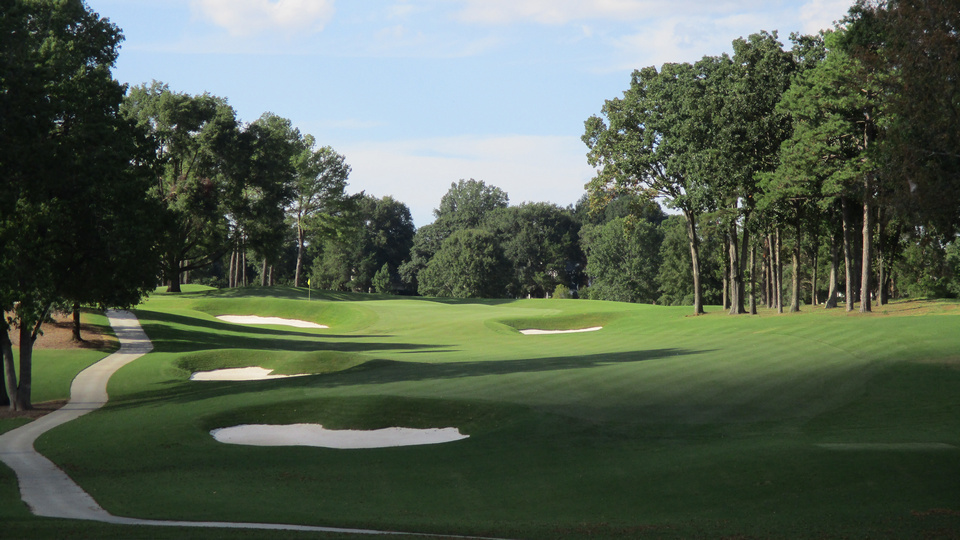
Tom Mackenzie
EIGCA
Partner of Mackenzie & Ebert
Chichester West Sussex, UK
Tom Mackenzie has been a partner with Martin Ebert of Mackenzie & Ebert since 2005. Between them, they advise many of the Top 100 courses in the world. He designed the new 7th hole at Royal Dornoch and master-minded a major member-led project at Royal Birkdale working with Senior Design Associate, Mike Howard.
This has seen the 5th and 7th holes completely rebuilt and the creation of new 14th and 15th holes as well as extensive work on the bunkering and green surrounds. He is a Past-President of the European Institute of Golf Course Architects.
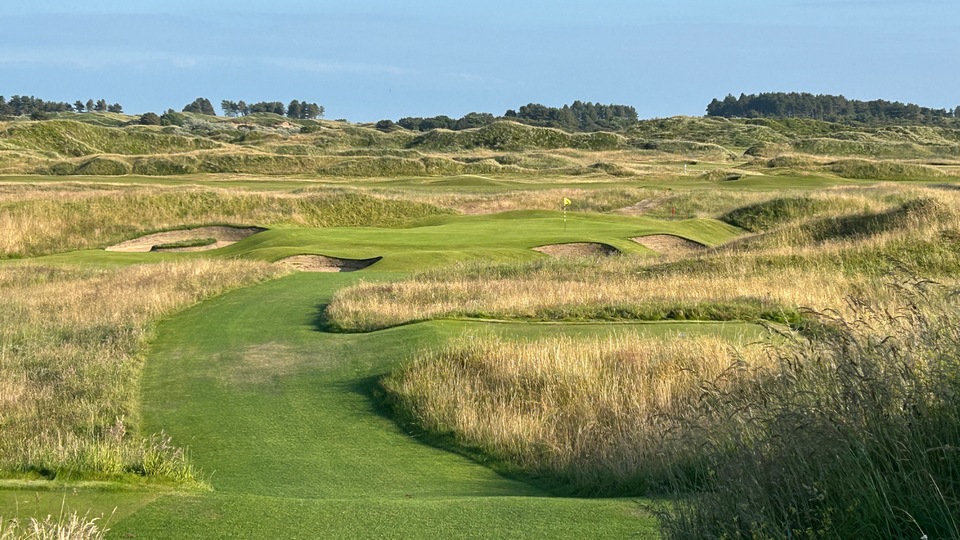
Stuart Rennie
EIGCA
Pangaea Golf Architecture
Glasgow, Scotland, UK
Hails from the Highlands of Scotland where he grew up playing Royal Dornoch. Now lives in Glasgow with his family and plays off a single figure handicap at Royal Troon.
Has a wide range of experience working on golf projects globally with Peter Thomson’s design practices and has run his own practice for over 12 years before joining forces with Jeffrey Danner to form Pangaea Golf Architecture, a relatively new international golf design practice with offices in the UK and California.

For the latest news in the golfing world, follow us on X (Formally Twitter).



